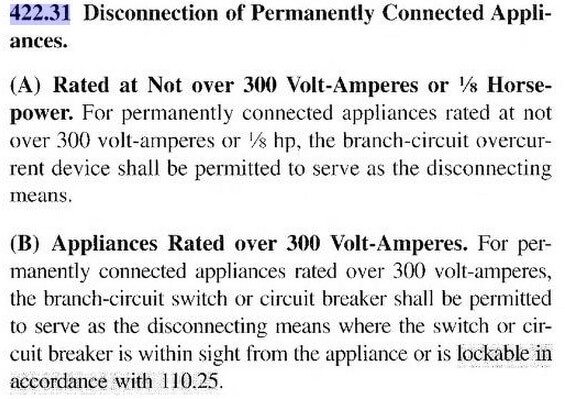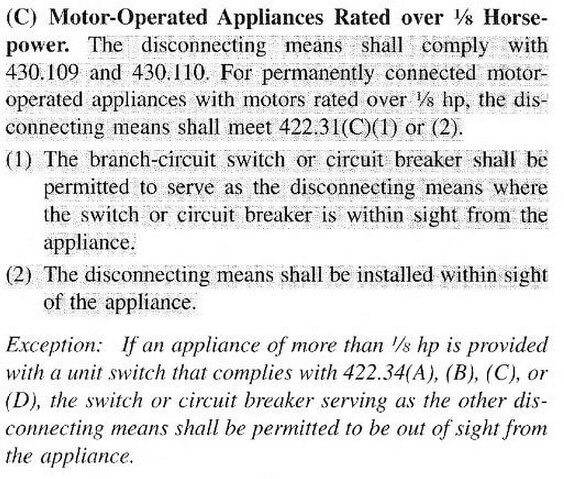While doing a new-construction home inspection recently, I came across a furnace with no disconnect / service switch in the same room. Usually, it's just a light switch that controls power to the furnace, and it's either mounted on the side of the furnace or on a nearby wall. Instead, there was a lockout at the circuit breaker. As I mentioned in my blog post about lockouts at circuit breakers, this is one way of providing a disconnect for a permanently installed appliance.
At least I think that gold thing pictured above is a lockout device. I've never seen one that looks exactly like that, and I don't understand how one could lock the circuit breaker into the "off" position with this device, but that's besides the point.
The point here is that this was the first time I've ever seen a lockout at a furnace circuit, and that means one of two things: I'm going to learn something new, or whoever installed the lock is going to learn something old. The electrical code changes every three years, and I do my best to keep up with the major changes but I sure don't call myself a code guru, especially when it comes to electrical.
So the question here is whether or not it's allowable to use a lock at the circuit breaker for a furnace, in lieu of a separate service switch by the furnace. To get answers to electrical code questions, I usually start by looking in my CodeCheck Electrical book, which I have in pdf format and can pull up on my phone. I turned to the "Appliances" section, and found this:
That tells me that the 2011 NEC required a disconnect within sight for a central furnace, but the CodeCheck books are quick look-up books for home inspector type folks like myself. A CodeCheck book is not an official code document, and this book doesn't list the 2014 NEC requirements. To check on the 2014 NEC requirements, I went to https://archive.org/stream/nfpa.nec.2014#page/n1/mode/2up, and navigated to section 422.31 (B). Here's what that says:
So according to that section, maybe it's ok to have a lockable breaker. I still needed to see section 422.31(c):
First, does this section apply? Yes. The blower fan for any furnace will be rated over 1/8 horsepower. Items 1 and 2 tell me the disconnect needs to be in sight of the appliance. A lockout at the circuit breaker in a different room is not an acceptable method… unless the exception in italics contradicts that. Ok, now I turn to section 422.34 to see what all that's about.
Ok, done. I don't need to read sections A through D, because the furnace doesn't have a unit switch. So there we have it. Because a furnace has a blower motor rated at over 1/8 horsepower, it needs a disconnect within sight of the appliance, and a lockout at the breaker is not an acceptable substitute. I have now committed all of this to memory, and I'll never have to look it up again… unless I forget, in which case I'll look up this blog post.






